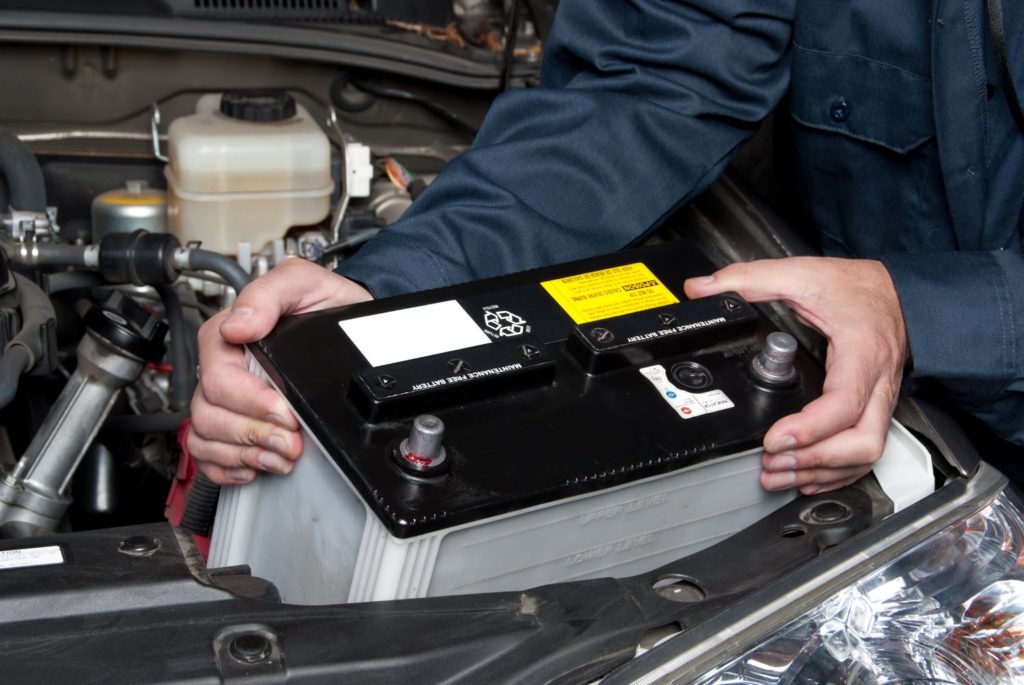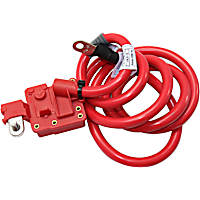An OBD-II code is designed to tell you possible issues in your vehicle. For you to resolve one, you must first know what it means. If you’re having trouble figuring out what a P2610 code means and how to clear it, you’ve come to the right place. This short guide will give you what you need to know about code P2610.
What Does the P2610 Code Mean?
Diagnostic Trouble Code (DTC) P2610 stands for “ECM/PCM Engine Off Timer Performance.” It means there is a malfunction in the engine control module (ECM) or powertrain control module (PCM) regarding an inability to identify the state of an engine. More specifically, it points to not being able to detect the length of time in which the engine has been turned off.

The vehicle has either the ECM or PCM as its engine controller, which relies on signals from the engine to identify how long the engine has been shut off. In many cases, the control module will use the engine coolant temperature sensor signal to determine how long the engine has stopped operation.
The P2610 code is stored once the ECM or PCM fails to access this timer or the timer simply isn’t working. The malfunction indicator lamp (MIL) may also be illuminated to indicate the issue. The MIL also typically activates for multiple failed ignition cycles.
To learn the possible causes of code P2610, read the next section.
For a technical discussion about the Engine Off Timer diagnostic routine and how it may trigger OBD codes, read our explanation here.

Note: The definition of code P2610 may differ depending on the vehicle manufacturer. Consult the appropriate repair manual or repair database for the exact code definition.
What are the Possible Causes of the P2610 Code?
Here are some common triggers of the error code P2610:
- Internal PCM problem
- PCM power or ground circuit problems
- Faulty engine coolant temperature sensor (ECT)
- Engine cooling system problems
- Electrical interference
- Dead battery or poor battery cableconnections
What are the Common Symptoms of the P2610 Code?
Depending on the severity, other related diagnostic trouble codes may also be stored. You may notice the following symptoms if you drive a vehicle with a logged P2610 trouble code:
- Illuminated check engine light
- Engine drivability issues may appear eventually

How to Diagnose the P2610 Code
Since a lot of components depend on the ECM/PCM internal engine off timer performance, the code P2610 must be resolved immediately. Diagnosing it, however, can be tricky given that it has many possible causes. Keep in mind that the diagnostic and repair steps may vary depending on your vehicle’s make and model.
As this is a complicated code, it is best to refer to your manufacturer’s repair information for diagnostic strategies. Leave the job to a mechanic or technician if you are not well-versed with auto repair.
How to Fix the P2610 Code
Just like most OBD-II codes, there is no single solution for the P2610 code. Repair and diagnostic steps depend on the specifications of your vehicle. While code P2610 shares similar triggers and symptoms with several other engine codes, this does not mean that it has a general solution.
If you’re not familiar with auto repair, you should leave the job to an expert. However, if you’re a skilled automotive DIYer, you can check out online auto repair manuals and guides to help you identify the right repair steps for your vehicle.
For instance, an ALLDATA subscription provides detailed factory repair information that you can use to accurately resolve issues in your car. This should help you resolve this error code and should be a good reference for other issues you may encounter in the future.
What is the Engine Off Timer Diagnostic Routine and How Does It Trigger an OBD Code?
The purpose of the ECM/PCM’s Engine Off Timer diagnostic routine is to determine if the Powertrain Control Module (PCM) internal clock is running as expected.
This engine off timer is used as an enable condition for various OBD monitors.
As part of the OBD2 system, there are vehicle platforms that perform certain tests after the engine has been shut off for a certain amount of time. One such test is the EVAP system on vehicles that measure fuel tank pressure as the vehicle cools down to determine whether there are evaporative emission leaks.
Some other systems wait a certain amount of cooldown time before they “wake up” the O2 heaters and measure the calculated resistance of the heaters as they warm them up.
Most folks don’t know what their ECM/PCM is up to in the middle of the night. Note that not all vehicles do this, but the ones that do like to know if the ECM/PCM can keep up with how long the engine has been turned off, and that’s what this code is all about.
The Engine Off Timer rationality test on some vehicles basically consists of two different tests the ECM/PCM uses to evaluate shut down time.
During an initial engine start, if it is determined that the engine start undergoes a cold start (determined by comparing the engine coolant temperature versus ambient temperature), the Slow Test will be run and a long shut down time would be expected.
If it is determined that the engine start is not a cold start, the Fast Test will be run and a short shut down time is expected because the engine has not been cooled down to cold start conditions.
- The P1607 DTC will set if the Slow Test diagnostic runs and fails.
- The P2610 DTC will set if the Fast Test diagnostic runs and fails.
During an initial engine start, if it is determined that the engine start undergoes a cold start (determined by comparing the engine coolant temperature versus ambient temperature), the Slow Test will be run and a long shut down time would be expected.
If it is determined that the engine start is not a cold start, the Fast Test will be run and a short shut down time is expected because the engine has not been cooled down to cold start conditions.
–Richard McCuistian, ASE Certified Master Automobile Technician
Products Mentioned in this Guide
Any information provided on this Website is for informational purposes only and is not intended to replace consultation with a professional mechanic. The accuracy and timeliness of the information may change from the time of publication.


 Coolant Temperature Sensor
Coolant Temperature Sensor
 Battery Cable
Battery Cable
 Engine Control Module
Engine Control Module


















